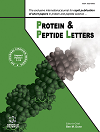
Full text loading...
Human papillomavirus type 16 (HPV16) is implicated in various malignancies. The virus enters host cells through endocytosis, during which the minor capsid protein L2 interacts with the S100A10 subunit of the annexin A2 heterotetramer (A2t) on the host cell membrane. This interaction is critical for facilitating HPV entry and subsequent infection of human cells. Therefore, examining the interaction between the L2 protein and S100A10 is crucial for advancing our understanding of the mechanisms by which HPV16 infiltrates cells.
The cell-free expression (CFE) system was investigated for L2 purification. The structure of L2 was characterized and its interaction with S100A10 was explored.
The L2 protein was expressed using a CFE expression system, and its expression was verified via Western blotting. L2 was further purified through size-exclusion chromatography (SEC), and its structural features were preliminarily assessed using transmission electron microscopy (TEM) and circular dichroism (CD) spectroscopy. Additionally, surface plasmon resonance (SPR) was employed to analyze the interaction between L2 and S100A10.
Western blotting confirmed the successful expression of L2. TEM and CD provided preliminary structural observations of L2, and SPR measurements yielded precise kinetic parameters for the interaction between L2 and S100A10.
In this study, we successfully expressed the HPV16 L2 protein using a cell-free protein expression system. Preliminary structural analysis using TEM and CD revealed key structural features of L2. Furthermore, SPR analysis provided detailed kinetic parameters for its interaction with S100A10. These findings provide more details on understanding L2’s structural features, with broader implications for antipathogen studies.

Article metrics loading...

Full text loading...
References


Data & Media loading...
Supplements

